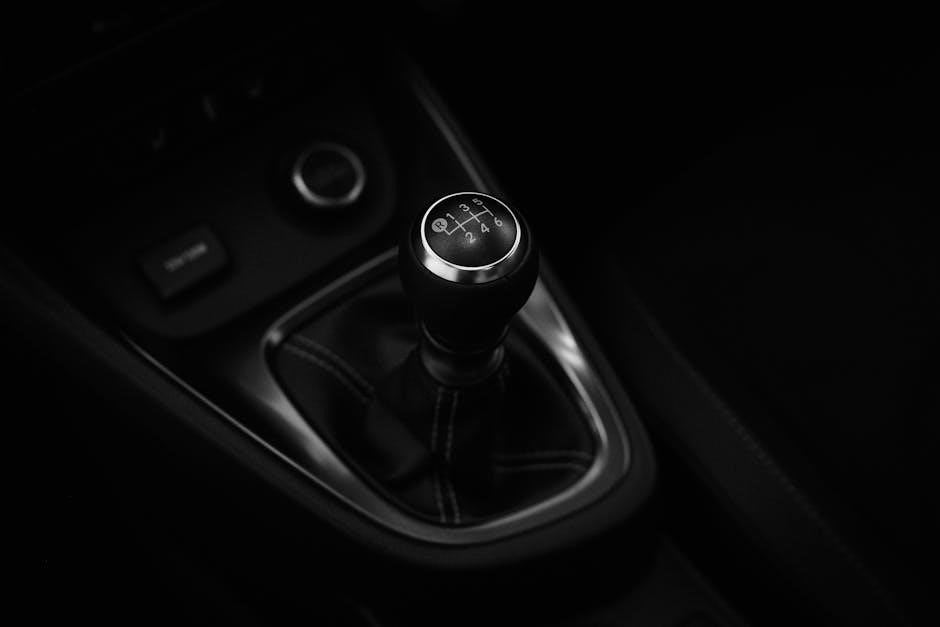A vehicle blackbox DVR is a crucial in-car monitoring system, ensuring security and evidence collection. It records high-quality video, offering peace of mind and legal protection for drivers.

Key Features
- High-definition video recording for clear evidence capture.
- Loop recording ensures continuous storage without manual intervention.
- Emergency recording activates during sudden events.
- Compact design for easy installation in vehicles.
Video Resolution
Video resolution is a critical feature of a vehicle blackbox DVR, determining the clarity and detail of recorded footage. Modern DVRs often support high-definition resolutions, such as 1080p or 4K, ensuring sharp images and clear visibility of important details like license plates. Higher resolutions are particularly beneficial for capturing clear evidence in low-light conditions or at greater distances. Some models allow adjustable resolution settings, enabling users to balance video quality with storage capacity. This feature is essential for drivers seeking reliable evidence in case of accidents or incidents, ensuring that footage remains usable for legal or insurance purposes.
Storage Capacity
Storage capacity is a vital aspect of a vehicle blackbox DVR, determining how much footage can be recorded before the device needs to be emptied or overwritten. Most DVRs support SD cards ranging from 32GB to 512GB, allowing users to store several hours of video. Higher storage capacities are ideal for extended recording sessions or for drivers who need to retain footage for longer periods. Some models also feature loop recording, automatically overwriting the oldest files when storage is full. Ensuring sufficient storage capacity is essential for capturing continuous, high-quality evidence while driving. This feature is crucial for reliable performance and data retention.
Night Vision
Night vision in a vehicle blackbox DVR enhances low-light recording capabilities, ensuring clear footage even in dark conditions. This feature is crucial for capturing details during nighttime driving. Advanced models use Wide Dynamic Range (WDR) technology to balance light and dark areas, reducing glare from headlights. Infrared LEDs are often employed to illuminate the scene without visible light, providing monochrome but detailed footage. Night vision is essential for improving safety and evidence quality in low-light environments. It is a must-have feature for drivers who frequently operate their vehicles at night or in areas with poor lighting conditions. This technology significantly enhances the DVR’s ability to capture usable footage in challenging lighting scenarios.
Installation Guide
Mount the DVR securely, connect power and video cables, and ensure proper wiring to avoid interference. The DVR features automatic restart for stability during power interruptions.
Step-by-Step Instructions
Begin by unboxing and preparing the DVR system. Mount the camera securely on the windshield or dashboard. Connect the power cable to the vehicle’s cigarette lighter or fuse box. Link the video cable to the camera and ensure proper wiring. Hardwire the DVR for stable power supply, avoiding interference. Test the system to confirm video recording and audio functionality. Adjust the camera angle for optimal view. Secure all cables neatly to prevent obstruction. Power on the device and verify automatic recording. Finally, ensure the DVR is set to restart automatically in case of power loss for uninterrupted monitoring.
Hardwiring
Hardwiring the DVR ensures a stable power supply and eliminates battery drain. Locate the vehicle’s fuse box and identify an ignition-controlled power source. Connect the DVR’s power cable to this source, ensuring proper grounding. Use a fuse tap for safe installation. Route the wiring neatly through the dashboard to avoid obstructions. Secure all connections tightly to prevent loose wires. This setup provides a reliable power supply and prevents accidental disconnections. Hardwiring is recommended for continuous recording and optimal performance. Always follow the vehicle’s wiring diagram to avoid damage or electrical issues. Test the system after installation to ensure functionality.
Using the DVR
Operating the DVR is intuitive. Access menus via the touchscreen or buttons to start or stop recording, adjust settings, and review footage for seamless functionality.
Recording
Recording with the DVR is seamless, automatically starting when the vehicle ignition is turned on. It captures high-quality video with adjustable resolution settings. The system supports loop recording, overwriting older footage when storage is full. Motion detection and impact sensors can trigger event recording for added security. Users can manually start or stop recording as needed. The DVR ensures continuous monitoring, providing valuable evidence in case of incidents. Regular updates and settings adjustments ensure optimal performance. This feature-rich system is designed to meet the needs of drivers seeking reliable in-vehicle recording solutions.
Playback
Playback on the vehicle DVR allows users to review recorded footage with clarity. The system supports video playback directly on the device or through connected devices. Users can easily access stored recordings, with timestamps and GPS data for precise event identification. Playback controls enable pausing, rewinding, and adjusting video speed for detailed analysis. The DVR ensures recorded files are securely stored and protected from accidental deletion. Managing playback settings and transferring files to external devices is straightforward. This feature enhances the DVR’s functionality, making it an essential tool for reviewing driving incidents and ensuring evidence is readily available when needed.

Advanced Features
- Motion detection triggers recording when movement is detected, enhancing security.
- GPS tracking provides location data, improving route tracking and evidence accuracy.
GPS
The GPS feature in a vehicle blackbox DVR provides precise location tracking, embedding coordinates into recorded footage. This enhances evidence reliability and aids in route reconstruction. Drivers benefit from accurate speed tracking and geolocation data, useful for legal purposes or insurance claims. The GPS function seamlessly integrates with the DVR, ensuring synchronized data capture. It also supports timestamping, offering a comprehensive record of journeys. This feature is invaluable for fleets, delivering insights into vehicle routes and driving patterns. By combining video and location data, the GPS capability ensures a detailed and accurate record of every trip, making it an essential tool for security and logistics management.
Motion Detection
Motion detection is a standout feature in vehicle blackbox DVRs, enabling automatic recording when movement is detected. This function enhances security by capturing unexpected events, such as accidents or vandalism, without continuous recording. The system uses sensors to identify motion, ensuring footage is saved only when necessary, which conserves storage space. Adjustable sensitivity settings allow users to customize detection levels, reducing false triggers like minor vibrations. Motion detection is particularly useful in parked vehicles, offering an added layer of protection. By selectively recording incidents, it ensures that critical moments are never missed, making it an essential tool for driver safety and evidence collection.
Maintenance
Regular firmware updates and hard drive checks ensure optimal performance. Periodically inspect cables and restart the DVR during low activity to maintain functionality and prevent data loss.
Firmware Updates
Regular firmware updates are essential for maintaining the optimal performance of your vehicle blackbox DVR. These updates improve functionality, fix bugs, and enhance security features. To update, visit the manufacturer’s website and download the latest firmware version compatible with your device. Use a USB drive to transfer the firmware file to the DVR, then follow the on-screen instructions to complete the installation; Ensure the device is fully powered during the update to avoid system corruption. Updating firmware can also add new features and improve video quality, ensuring your DVR operates efficiently and securely. Always verify the firmware source to prevent unauthorized access or malware. Regular updates keep your DVR up-to-date with the latest advancements in digital recording technology.
Troubleshooting
Troubleshooting common issues with your vehicle blackbox DVR, such as poor video quality or device malfunction, involves checking connections, restarting the unit, and ensuring proper installation. Consult the manual or contact support for persistent problems.
Common Issues
Common issues with vehicle blackbox DVRs include poor video quality, storage capacity limitations, and connectivity problems with the app. Night vision may struggle in low-light conditions, and hardwiring can sometimes malfunction. Remote access concerns arise, as users worry about unauthorized deletion of files. Additionally, power interruptions during boot may cause the DVR to restart, potentially losing footage. Firmware updates are essential to resolve these issues and ensure optimal performance. Proper installation and regular maintenance can help mitigate many of these problems, ensuring reliable recording and playback functionality. Addressing these issues promptly enhances overall user experience and system reliability.
Legal Considerations
When using a vehicle blackbox DVR, it is essential to consider legal implications. Ensure compliance with local laws regarding data protection and privacy rights. Recording without consent in certain areas may be illegal. Be aware of regulations governing audio recording, as some devices capture both video and sound. Additionally, GPS tracking features may raise privacy concerns. Always inform individuals they are being recorded, especially in private spaces. Consult local laws to avoid legal consequences. Proper usage and adherence to regulations ensure the DVR serves its purpose without violating legal standards. Stay informed about updates in privacy and surveillance laws to maintain compliance.
Comparison
When comparing vehicle blackbox DVR models, key factors include video resolution, storage capacity, and advanced features. Higher resolution models, such as 4K, offer superior clarity compared to 1080p or lower. Storage options vary, with some devices supporting expandable memory via SD cards. Night vision capabilities differ, with premium models offering enhanced low-light performance. GPS integration is another distinguishing feature, enabling location tracking and speed monitoring. Motion detection and alerts are common in advanced units. User interfaces and connectivity options, such as Wi-Fi or Bluetooth, also vary. Comparing these aspects helps users select the most suitable DVR for their needs, balancing cost and functionality effectively.
User Reviews
Users consistently praise vehicle blackbox DVRs for their reliability and functionality. Many highlight the importance of high-quality video resolution and storage capacity for capturing crucial moments. Night vision capabilities are particularly appreciated for enhancing visibility in low-light conditions. Some users have noted challenges with motion detection sensitivity and hardwiring complexity. Overall, the devices are lauded for providing peace of mind and serving as reliable evidence sources. Customer support and ease of use are also frequently mentioned, with many recommending these systems for their durability and performance in various driving conditions.
Future Trends
Future vehicle blackbox DVR systems are expected to integrate advanced AI for enhanced motion detection and real-time alerts. Improved 5G connectivity will enable faster data transfer and remote monitoring. Cloud storage solutions will expand, offering more reliable backup options. GPS and voice command features will become standard, enhancing user convenience. Additionally, there will be a focus on energy-efficient designs to reduce battery drain. Manufacturers are also exploring augmented reality overlays for real-time navigation. As technology evolves, these systems will become more seamlessly integrated with vehicle infotainment systems, providing a holistic driving experience. Sustainability and data security will also be key priorities in upcoming models.
A vehicle blackbox DVR is an essential tool for modern drivers, offering unparalleled security, evidence collection, and peace of mind. By recording high-quality video, it provides critical documentation in case of accidents or disputes. The system’s advanced features, such as night vision and motion detection, ensure reliability in various conditions. Proper installation and maintenance are key to maximizing its performance. As technology advances, these devices will continue to evolve, integrating new capabilities like AI and enhanced connectivity. For drivers seeking safety and accountability, a vehicle blackbox DVR is a vital investment. Refer to the manual for detailed guidance on setup, usage, and troubleshooting to ensure optimal functionality and longevity.

References
For comprehensive guidance on vehicle blackbox DVRs, consult the official product manual and manufacturer support pages. Additional resources include installation guides, technical specifications, and community forums discussing user experiences. Troubleshooting sections and firmware update instructions are often found on the manufacturer’s website. Supplementary materials, such as video tutorials and FAQ sections, provide further insights. Ensure all information aligns with the specific DVR model for accuracy. Referencing these sources ensures optimal setup, usage, and maintenance of the device, enhancing its performance and longevity for reliable in-car monitoring and evidence collection.

FAQs
Frequently Asked Questions about vehicle blackbox DVRs address common concerns. Can someone remotely access and delete files? Typically, no, unless the system has vulnerabilities. Does night vision work in complete darkness? Most models use IR LEDs for low-light recording. How much storage is needed? Capacity varies, but loop recording manages space efficiently. Is hardwiring required? No, but it ensures consistent power. How often should firmware be updated? Regular updates improve functionality. What warranty is offered? Check manufacturer policies for details.

Appendix
The appendix provides supplementary resources for the vehicle blackbox DVR manual. For further assistance, refer to the official documentation link: https://example.com/manual. Additional tools like RoboRealm can enhance functionality for advanced users. Contact manufacturer support at support@example.com for unresolved issues. A comprehensive FAQ section is available at https://example.com/FAQs; Ensure compatibility with your vehicle’s electrical system and consult a professional if needed. For troubleshooting guides, visit https://example.com/troubleshoot. Regular firmware updates are crucial for optimal performance. Always use genuine accessories to maintain warranty validity.
